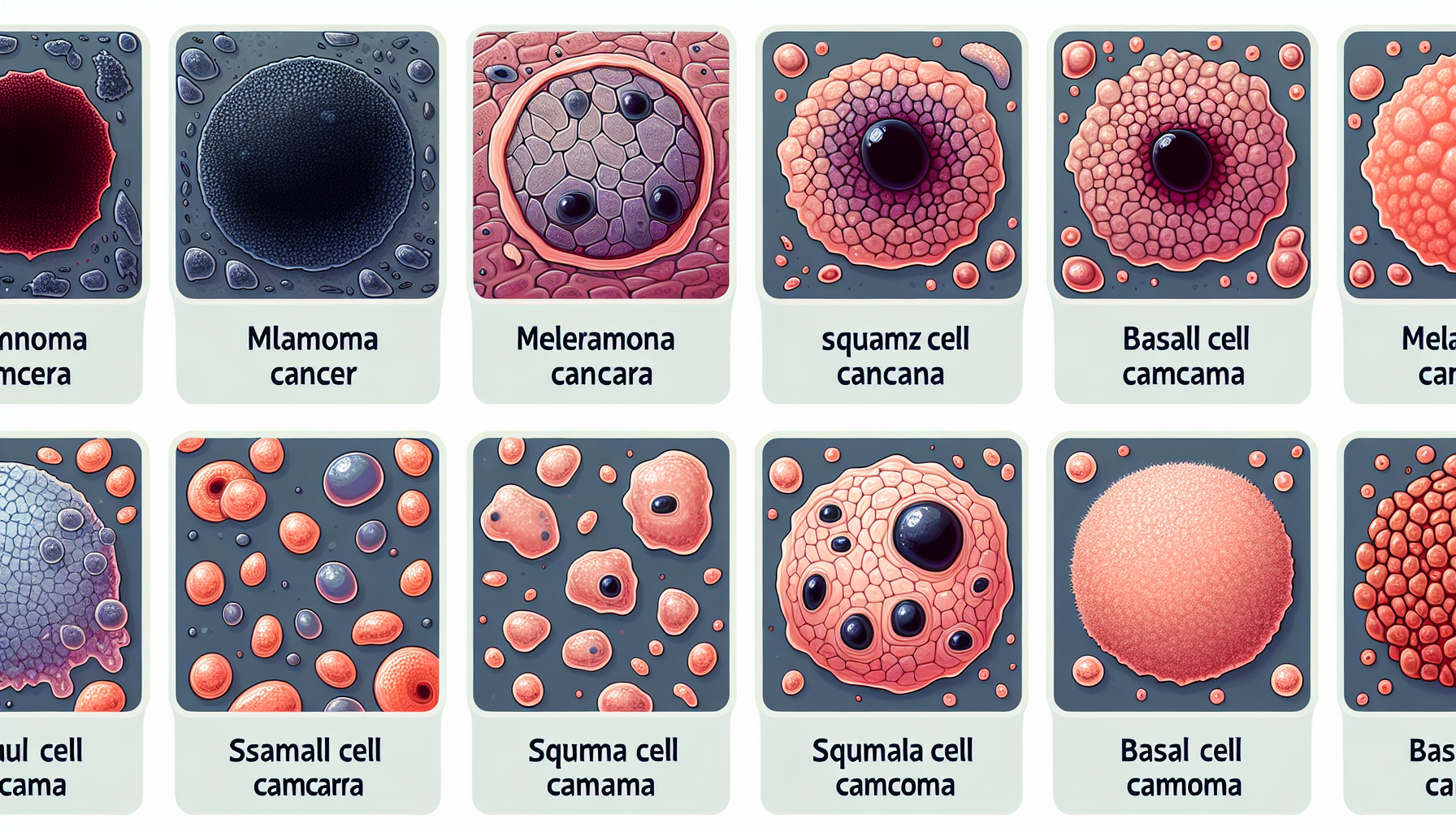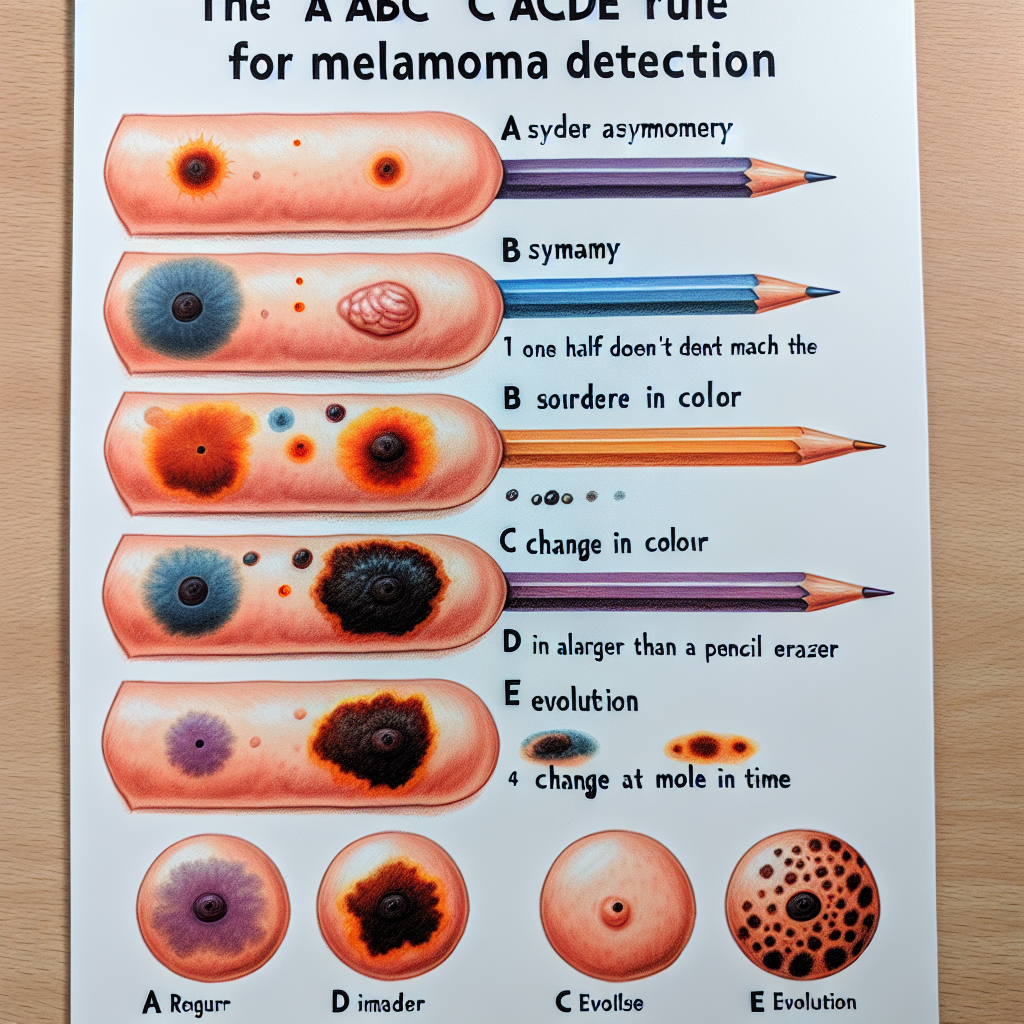Skin cancer, the uncontrolled growth of abnormal skin cells, is a significant health concern worldwide. It arises when DNA damage to skin cells—most often caused by ultraviolet (UV) radiation from the sun or tanning beds—triggers mutations, or genetic defects, that lead the skin cells to multiply rapidly and form malignant tumors. This article aims to provide a comprehensive understanding of the different types of skin cancer, their characteristics, prevention, and treatment.
The Major Types of Skin Cancer
Skin cancers are mainly categorized into three types: basal cell carcinoma (BCC), squamous cell carcinoma (SCC), and melanoma.
Basal Cell Carcinoma (BCC)
BCC is the most common form of skin cancer. It arises from the basal cells, which are located in the deepest layer of the epidermis. BCCs often manifest as open sores, red patches, pink growths, shiny bumps, or scars and are usually caused by cumulative and intense sun exposure.
Squamous Cell Carcinoma (SCC)
SCC originates from the squamous cells that make up most of the skin’s upper layers (epidermis). SCC is chiefly associated with prolonged exposure to UV radiation, leading to scaly, reddish patches, open sores, or warts that may crust or bleed. Compared to BCC, SCC is more likely to grow deeper and spread to other parts of the body if not treated promptly.
Melanoma
Melanoma is less common but the most dangerous form of skin cancer. It develops in the melanocytes, the cells responsible for skin pigment. Melanoma can appear as a new, unusual growth or a change in an existing mole. Key warning signs include changes in size, color, shape, or texture of a mole or other skin growth. Early detection is critical as melanoma can spread quickly to other organs.
Risk Factors and Prevention
Risk factors for skin cancer include fair skin, a history of sunburns, excessive UV light exposure, living in sunny or high-altitude climates, moles, precancerous skin lesions, a family history of skin cancer, immune system suppression, and exposure to radiation or certain substances such as arsenic.
Prevention strategies are critical in reducing the risk of skin cancer. They include avoiding peak sun hours, seeking shade, wearing protective clothing, applying broad-spectrum sunscreen, avoiding tanning beds, and being vigilant about skin changes. It’s also important to maintain overall skin health by following a healthy lifestyle and diet, as well as understanding the effects of UV radiation on skin.
Detection and Diagnosis
Early detection of skin cancer is crucial. Regular self-examinations and annual skin check-ups with a dermatologist are recommended. When checking your skin, follow the ABCDE rule for melanoma: Asymmetry, Border irregularity, Color variations, Diameter larger than 6mm, and Evolving size, shape, or color.
If a suspicious lesion is found, a biopsy is performed to determine if it is cancerous. Additional tests may be done to determine the stage of the cancer, including its depth or thickness, and if it has spread.
Treatment Options
The treatment for skin cancer depends on the type, size, location, and depth of the tumor, as well as the patient’s overall health and preferences. Common treatments include:
- Surgical excision: Removal of the cancerous tissue along with some healthy tissue margin.
- Mohs surgery: A precise surgical technique where layers of cancer-containing skin are progressively removed and examined until only cancer-free tissue remains.
- Cryotherapy: Freezing the cancer cells with liquid nitrogen.
- Topical medications: Creams or ointments applied directly to the skin.
- Radiation therapy: Using high-powered energy beams to kill cancer cells.
- Chemotherapy: Utilizing drugs to destroy cancer cells. For skin cancer, it’s often applied topically.
- Photodynamic therapy: Combining laser light with drugs that make cancer cells sensitive to light.
- Targeted therapy or immunotherapy: For advanced melanoma, these treatments target specific weaknesses in the cancer cells or stimulate the immune system to fight cancer cells.
Aftercare and Monitoring
Following treatment, patients need regular follow-ups to monitor for recurrence and manage any side effects from treatment. It’s also essential to continue protecting the skin from the sun and to adopt strategies for moisturizing dry skin in arid climates to promote healing and reduce the risk of new cancers.
Additional Resources
For those looking to dive deeper into the topic, a wealth of specialized resources are available:
- The Skin Cancer Foundation provides comprehensive information on skin cancer prevention, detection, and treatment (Skin Cancer Foundation).
- American Academy of Dermatology offers guidelines on how to perform a skin self-exam (American Academy of Dermatology).
- National Cancer Institute features extensive data on cancer statistics and research (National Cancer Institute).
Conclusion
Understanding the different types of skin cancer is essential for prevention, early detection, and effective treatment. While BCC and SCC are the most common and less aggressive, melanoma is particularly dangerous and requires immediate attention. By taking proactive steps for protection, conducting regular skin self-exams, and seeking professional medical advice when changes occur, we can significantly reduce the risks and impact of skin cancer. Always remember that the health of your skin is not just cosmetic—it’s a vital aspect of your overall well-being.



